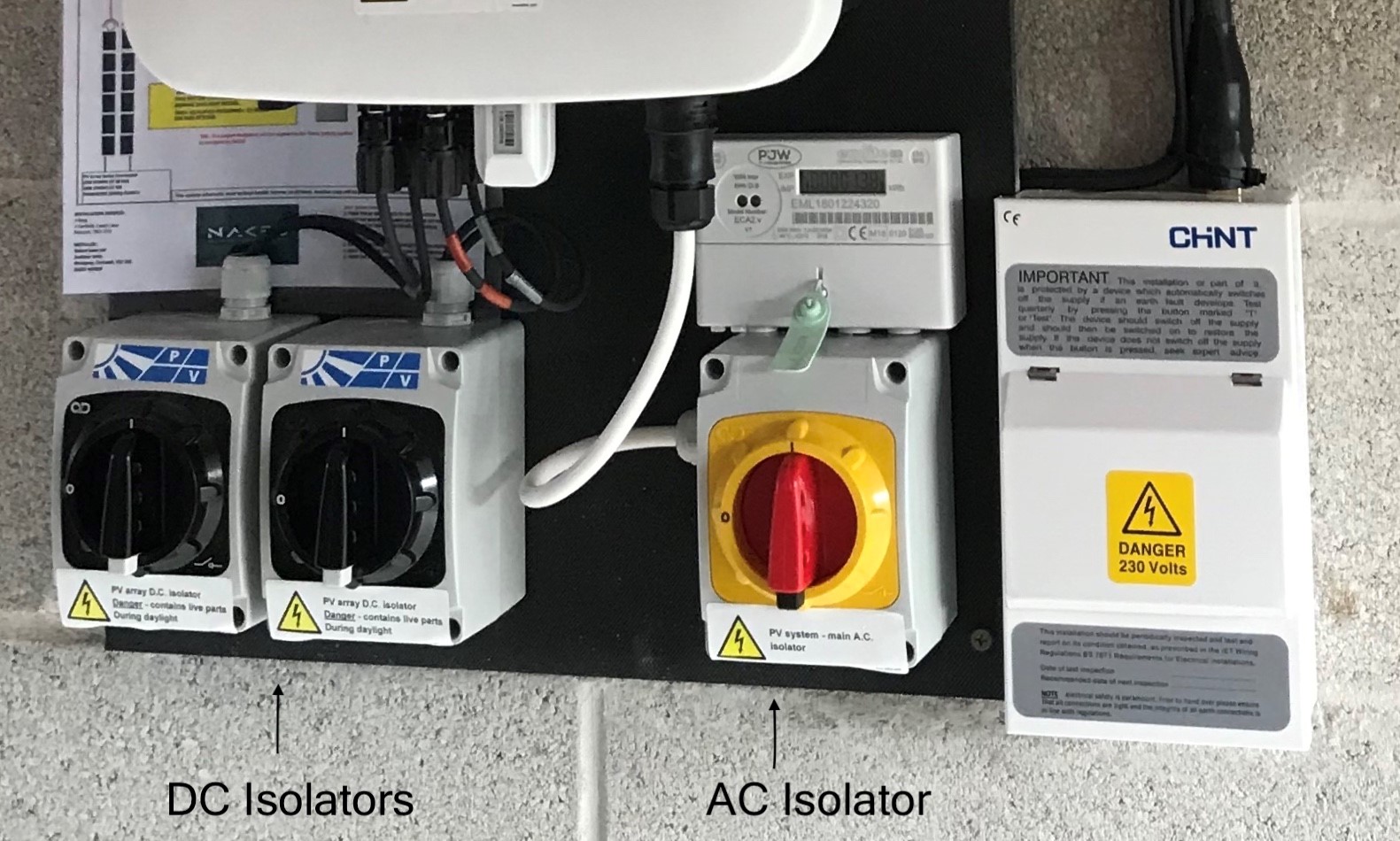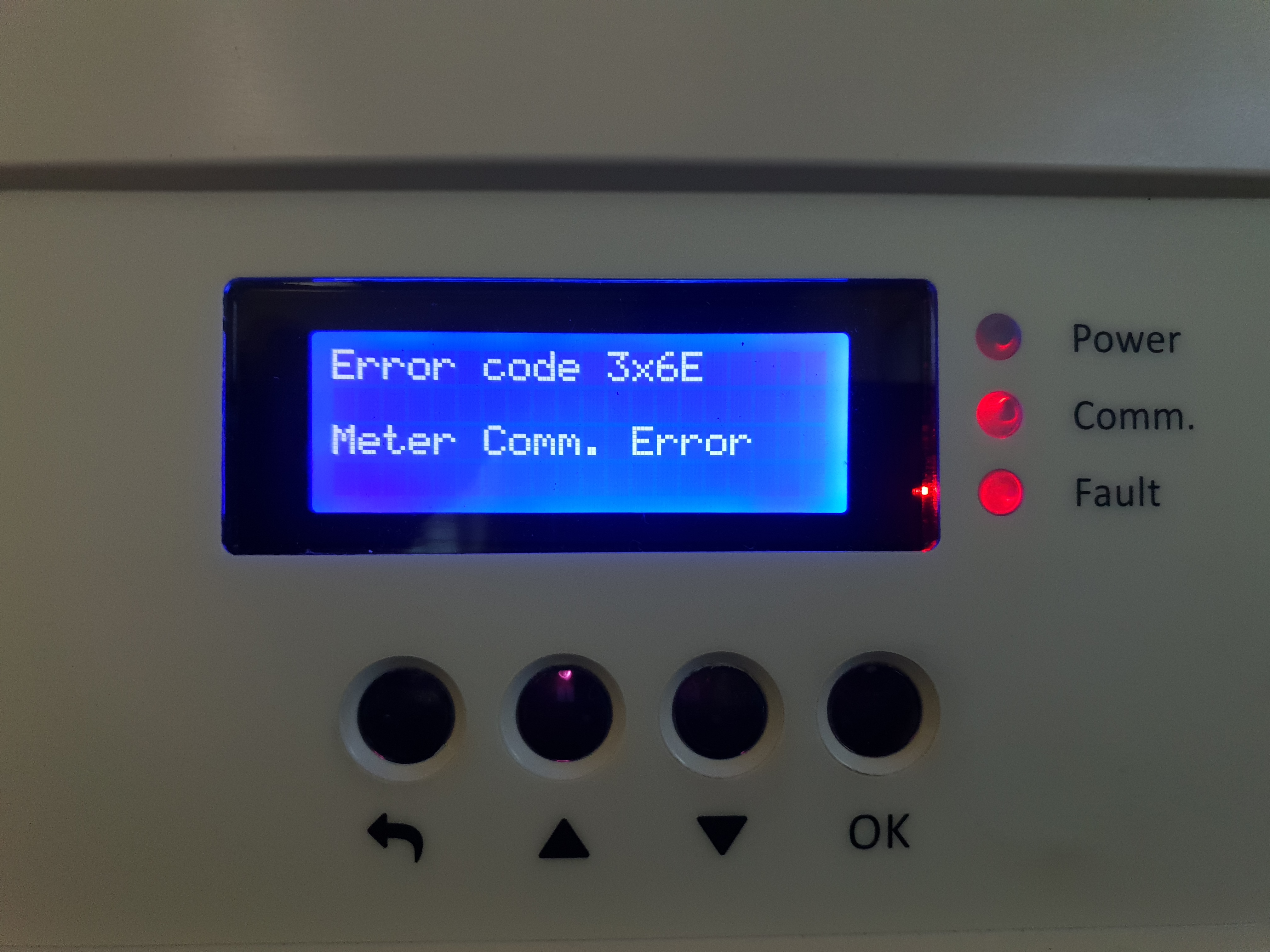Fault finding on solar PV systems
Why has my solar panel system stopped working? It’s a frustrating situation, but it can often be quickly and easily resolved.
Start by selecting your product type and manufacturer below, or scroll down to see the most common scenarios we come across.
- Solar inverter
- Battery System
- Power Optimiser
- Total Generation Meter
- Panels and Mounting System
- Commercial - Industrial
When it comes to battery systems, we are yet to come across many recurring issues that we can write about here. However, there are steps you can take before contacting somebody about battery issues. See our guide for Tesla Powerwall, Solar Edge, GivEnergy, Pylon Tec, PureDrive, LG Chem, Sonnen and plenty of other batteries for a head start.
See our Solar Edge guide here
If you have Huawei, EnPhase, or other optimised systems, please contact the manufacturer and your original system installer, or raise a new enquiry with us to look into it.

- If there’s a solid red LED on your Total Generation Meter (TGM) then there is grid power to the TGM but nothing is being generated by the solar.
- If the TGM’s Red LED is blinking then the system is generating. The rate of the blink is determined by the power the panels are generating. If it’s a really dull day then it may only blink once every 20-30 seconds, so check carefully. If the sun’s out in full then the blinking may occur more than once a second.
- If the screen of the TGM is blank and the Red LED is never blinking then it looks like there is no grid power to the TGM.
If you believe that you have an issue with either the solar PV panels themselves, or with the mounting gear they are fixed to, see our guide here.
If you are looking for information on how to start troubleshooting on a commercial or industrial solar installation, look through our Commercial Troubleshooting page.
How to Power Cycle your Solar PV system
As with most electrical equipment, the first recommendation is to perform “Power Cycle” , aka, “turn it off, and turn it back on again”. But how should you do this with your solar? Follow along to see if a Power Cycle can restore your PV to its full potential.
- Identify your solar inverter, isolators switches, and appropriate fuse. Your inverter may be in the loft, garage, utility room, outbuilding, barn, or elsewhere. Locate it, and once you do, you should notice the isolator switches are in the immediate vicinity around it too. Where is that inverter powered from? Identify which fuse board / consumer unit it is powered from: it may well have a breaker labelled as “Solar” or “PV”.
- Make sure it is light outside. Some inverters require both DC and AC power to start up, so doing this at night or when particulalry dark outside may not work.
- Check that the fuse in the consumer unit is all the way up into the ON position: these can trip part-way down without coming all the way.
- Switch off the solar isolator switches, both the red/yellow AC isolator (power from grid/fuse board) and the black DC isolator(s) (power from panels).
- Wait a good 2 minutes. Patience is key here.
- Turn all isolator switches back on.
- Wait for the inverter to start up. Most inverters take around 3 minutes to get going again after a power cycle.
Has your inverter started up? If so, good news. Make a note so that you know when your inverter had an issue, and keep an eye on it every so often for the next couple of weeks. If it is a recurring issue, see below for some more possibilities, or use our Start Here guide above.
DC and AC isolators

Consumer Unit MCBs RCDs & Main Switch

Other Faults
RISO/ISO fault
A RISO / ISO fault code is a DC Isolation error code. RISO (DC Isolation) faults are complex faults that can be caused by a variety of things. Most commonly they are caused by a slight ingress of moisture somewhere on the DC line between panels and the inverter. This can be at the inverter inputs, along the cabling somewhere, at the connectors between panels, optimisers (if installed), or on the panels themselves.
These types of fault are often caused by excess moisture so may only happen on damp/wet days. It’s quite common for them to clear as the day warms up and dries any moisture out. If you have monitoring on your system then you may see your system starting to generate later and later in the mornings, especially on damp or wet days.
Steps:
- Determine if this is indeed wet weather related. Does the fault only occur after rain and/or strong winds? Does the fault clear after a period of dryness?
- Please provide photos of your system as it currently is, and we will review these. It may be that we can see potential issues from these pictures and ask you to rectify them without needing to visit.
- If your solar system has 2 black DC isolator switches, identify which “string” of the system is causing the problem. Whilst the fault code is present, switch off one of the DC isolators. After 5 minutes, is the fault still present? Write this down. Switch this DC isolator back on, and switch the other off: is the fault present after 5 minutes? Write this down. In most cases (not all), the fault is coming from one “string” of panels, meaning that the fault will only display when one of these DC isolators is turned on.
- At this point there may be a need to investigate physically, either from the ground level, or on the roof.
In addition to the usual requested photos, if possible, please provide photos of any cable junction boxes that are outside or in places susceptible to water (in a barn or leaky garage, for example). Also, of cabling that is visibly damaged, frayed, or similar.
MCB/RCD tripping
- This can happen when the system is starting up in the morning. Sticky relays in the inverter can mean too much current will flow and trip your switches in your consumer unit. You’ll need to contact us for further investigation.
- RCD tripping is caused when there is excess leakage current. RCDs are designed to prevent electrocution and can be very sensitive. Certain appliances, like PCs, electronic goods and inverters will have a small amount of leakage current in their normal operation. If several appliances combine on the same RCD then nuisance tripping may occur. Try turning off different devices to see if you can identify the cause using a process of elimination. If you still can’t fathom out the cause then give us a call or email.
Error code - SolarEdge inverter

Smashed panel could cause a RISO fault

Consumer Unit MCBs RCDs & Main Switch
